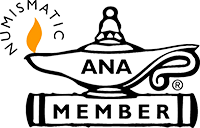Investing in 1967 Quarters: Hidden Bullion Opportunities
By Bullion Standard ·
5 min read

Professional traders analyzing forex markets on multiple computer screens, discussing stock market investments and financial data analysis.
Discovering Untapped Potential in 1967 Quarters
In the realm of numismatics and bullion investments, the 1967 quarter holds an intriguing position. As one of the non-silver quarters minted in response to the Coinage Act of 1965, these coins are often overlooked by precious metal investors focused on intrinsic value. Yet, they possess unique attributes that present hidden opportunities for those who recognize their potential. Despite lacking silver content, 1967 quarters captivate collectors with their historical significance and nuanced variations. As part of a diversified investment strategy, exploring the potential of 1967 quarters can yield surprising advantages.
Unearthing Value: Key Attributes of 1967 Quarters
- Lack of Mint Marks:
In 1965, the U.S. Mint suspended the use of mint marks to discourage hoarding amidst rising silver prices. Consequently, 1967 quarters lack these distinguishing features. This absence both simplifies and complicates rarity assessments for collectors and investors, as mint mark details typically play a key role in valuing older coins. Rarity must be determined by other aspects, such as condition and verified mint errors.
- Grading Conditions:
A coin's condition is pivotal in establishing its market value, particularly for non-silver quarters like those from 1967. Coins classified as mint state (MS) command premium prices. Professional grading services, such as the Professional Coin Grading Service (PCGS), assign specific grades (e.g., MS65, MS67) based on blemishes and luster, providing a dependable assessment of quality that significantly impacts investment value.
- 1967 Quarter Errors:
Error coins hold a special allure for collectors and can substantially elevate a 1967 quarter's worth. Errors may include off-center strikes, double dies, or clipped planchets. For instance, a doubled die error, where design elements are duplicated, attracts numismatists seeking unique pieces, further enhancing the coin's potential market value.
- Authenticity and True Value:
Verifying a quarter's authenticity is critical, particularly when dealing with valuable errors or high-grade specimens. Collectors and investors should utilize trusted grading services to authenticate and appraise coins. Additionally, detailed examination and comparison with verified specimens help ascertain a coin's true market value, safeguarding against counterfeit or misrepresented pieces.
Showcasing Hidden Gems: Valuable Examples of 1967 Quarters
Spotlighting specific examples illustrates the potential of 1967 quarters within an investment portfolio:
- High-Value Errors:
A 1967 quarter exhibiting a dramatic off-center strike can dramatically exceed its face and intrinsic value. Collectors pay significant premiums for such anomalies, elevating these quarters from commonality to prized status.
- Mint State 1967 Quarters:
Quarters in exceptional mint state condition, such as those graded MS67, are exceptionally rare and highly sought after. Their preservation adds numismatic value, appealing to those who appreciate pristine historical artifacts.
- Comparison to Pre-1965 Quarters:
While pre-1965 quarters entice investors with their 90% silver content, 1967 quarters derive appeal from different factors—primarily collectibility due to their errors and mint state conditions. Investors drawn to historical significance and rarity may find these quarters a compelling addition to their array.
Additionally, the historical context surrounding these coins enhances their intrigue. As the first years of non-silver issues, these coins reflect a pivotal shift in U.S. monetary policy—a narrative that often resonates with collectors and historians alike.

Strategic Insights for Maximizing Returns with 1967 Quarters
As an investment, 1967 quarters encompass both prospects and pitfalls. Their intrinsic metal value pales in comparison to pre-1965 silver quarters, yet their place in numismatic history and the presence of collectible errors render them an intriguing option for diversification. A well-curated collection of 1967 quarters strategically adding mint state conditions and errors offers potential for significant return on investment.
Engaging in the 1967 quarter market entails selling through reputable venues such as accredited coin dealers or established auction houses. These channels not only connect investors with serious buyers but also provide necessary credibility and security in high-value transactions.
By integrating 1967 quarters alongside traditional bullion assets, such as those outlined in a beginner's guide to investing in precious metals, investors can balance tangible precious metals with historically rich collectibles, enhancing both versatility and resilience in their portfolios.
Frequently Asked Questions (FAQ)
1. How does the metal composition of a 1967 quarter impact its investment potential compared to other bullion coins?
The 1967 quarter's composition primarily impacts its value as a collectible rather than as bullion due to its lack of silver content.
2. Can investing in 1967 quarters be a viable part of a diversified bullion portfolio?
Yes, they offer collectible value that may enhance investment diversity and potential profitability through rare finds.
3. What factors contribute to the value fluctuations of 1967 quarters in the precious metals market?
Market trends, collector demand, and the discovery of rare errors or unique mint state examples all influence value.
4. Are there historical events that have influenced the demand and value of 1967 quarters?
The Coinage Act of 1965, which eliminated silver from quarters, shifted demand to new non-silver quarters like the 1967 issue.
5. How does the lack of silver content in 1967 quarters compare to pre-1965 silver quarters in terms of investment attractiveness?
Pre-1965 quarters attract investors through intrinsic silver value, while 1967 quarters appeal more for their collectible potential.
Explore the Unique Landscape of Coin Collecting
Intrigued by the overlooked opportunities in the world of coin collecting, like the 1967 quarters? While traditional bullion investments offer tangible value, diversifying with historical and numismatic collectibles can enrich your portfolio's appeal and potential returns. To further enhance your investment strategy, consider exploring a range of bullion options alongside these unique coins.
Visit Bullion Standard's home page to discover a wealth of information and resources. Embrace the world of precious metals and collectibles to craft a resilient and intriguing investment portfolio.





















